MAIBANG; A NEW SCHOOL FOR THE DIMASAS
Interestingly, the first Jesuit school in Dima Hasao District, Assam, was not established by the Jesuits. In 1992, a group of local leaders, frustrated with the inadequate education in the region's schools, decided to start their own school in the village of Gunjung. However, lacking the expertise to run a successful institution, the school struggled.
In 1998, desperate for help, the group approached the Bishop of the Diocese of Diphu, asking if the diocese could take over the school. While none of the leaders were Christians, they were aware of the strong academic reputation of Catholic schools.
At the Bishop's request, the Jesuits assumed responsibility for the Gunjung school. It was not long the school began to excel. Other Dimasa villages were soon requesting the Jesuits to open schools in their villages as well. The Jesuits surmised that if they could raise the educational tide, so to speak, then all boats would rise. In the span of a decade, they opened five more schools. Their intuition paid off. The network of Jesuit schools in the Dima Hasao district that has been greatly responsible for the overall upliftment of the Dimasa community and the Dima Hasao district.
In 2010, the Jesuits opened the most recent of their schools in the Dima Hasao district, in small strategically located town named Maibang. It is where several village roads intersect. The school was envisioned as a model institution to inspire other schools in the area to improve their standards. The aim was to thus help raise the overall quality of education in the region.
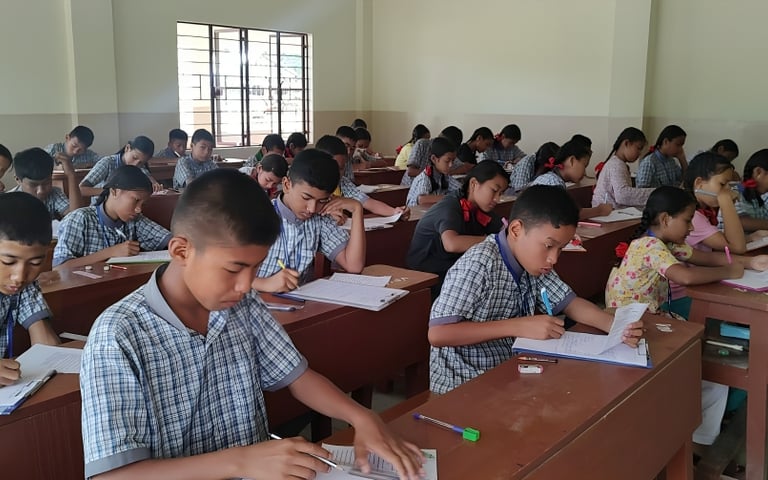

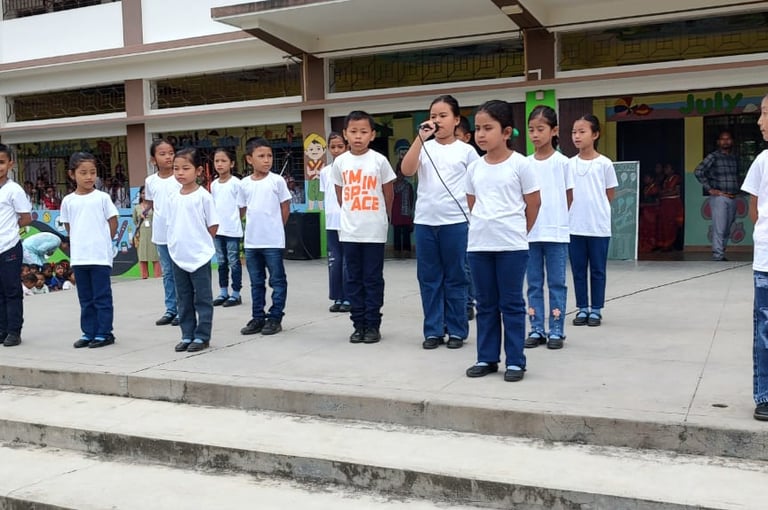

Most homes are made of bamboo and mud, vulnerable to the elements, often needing repair after the monsoons. The roads in the district are in poor shape, even though in recent years the condition of some of the major roads has improved. There is no industry in the area. Power supply is erratic and people have to depend on kerosene lamps. Children study by the dim light of kerosene lamps, damaging their health and making it difficult to complete their homework. It is also not uncommon for entire villages to burn down when there is an accidental fire in one of the homes.
Health issues are prevalent, with diseases like malaria, jaundice, and Hepatitis-B being common. The lack of clean drinking water and inadequate sanitation contribute to poor health. Government health services are limited, and many people die each year due to the absence of timely medical care. Roads are in poor condition, and while some improvements have been made to major routes, there is still no industry in the area. The power supply is unreliable, forcing people to use kerosene lamps, and fires caused by these lamps are common.
Ringsringdi Hojai, a student in Grade II, though still very small, shared her thoughts. “When I think of this school, what comes to my mind is that this school is my second home, and the teachers here are my second parents. I spend the maximum hours of my day on this campus, learning new things, reading my books, doing my classwork, conducting the morning assembly, playing, smiling, and laughing. I look forward to reaching the school, knowing that I will always have a wonderful time on this campus.”
The generous support from donors, particularly the Jesuits of Spain, has played a vital role in the development of the modern and stunning facilities at Maibang. The school's buildings are thoughtfully designed to foster academic excellence and holistic growth, including science laboratories, conference rooms, audiovisual rooms, and an auditorium. The spacious classrooms feature large windows, while the washrooms are well-ventilated and easy to maintain.
Suman Das, one of the students in the first batch, when asked, said, “I first visited this school when I was very small. My father chose to bring me to this school only because it was run by the missionaries, though it was far from my home and was located on the hillock of the small village in our town. But now, when I look back at the journey I have made and the years I have spent on this campus, it brings to my heart only gratitude towards everyone on this campus who has shaped me into what I am today.”
St. Xavier’s School Maibang places special emphasis on the education of girls. In the Dimasa community, daughters are often seen as less worthy of education because they are not expected to be the breadwinners. Safety concerns about teenage girls walking to school in neighbouring villages also deter families from sending their daughters. Despite these challenges, girls at St. Xavier’s tend to outperform boys academically.
For the Dimasa community, where social and economic challenges have hindered their progress for generations, St Xavier’s School Maibang stands out as a beacon of hope. The Dimasas of Maibang and the surrounding villages are deeply grateful to the many generous donors and the Jesuits for providing the community with a well-equipped school which they believe will help prepare their children for a brighter future.
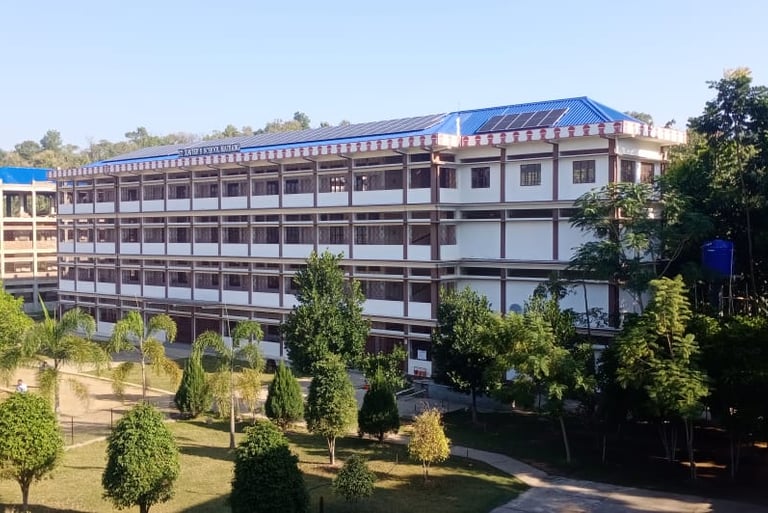

Many of the students at St. Xavier’s come from economically disadvantaged backgrounds. The school keeps fees low, making quality education accessible to a larger number of students. The school’s enrolment continues to grow, and in 2023, the first batch of students sat for the state-conducted high school exams, achieving the best results in the district. This success is likely to increase demand for admission in the future
Construction of St. Xavier’s School Maibang is still ongoing and is expected to be completed by the end of 2025. Additional infrastructure projects, such as a boys' hostel, staff housing, and a Jesuit residence, are still in progress. While it may take up to a decade for the campus to be fully completed, the students currently benefit from a beautiful and conducive environment for academic success.
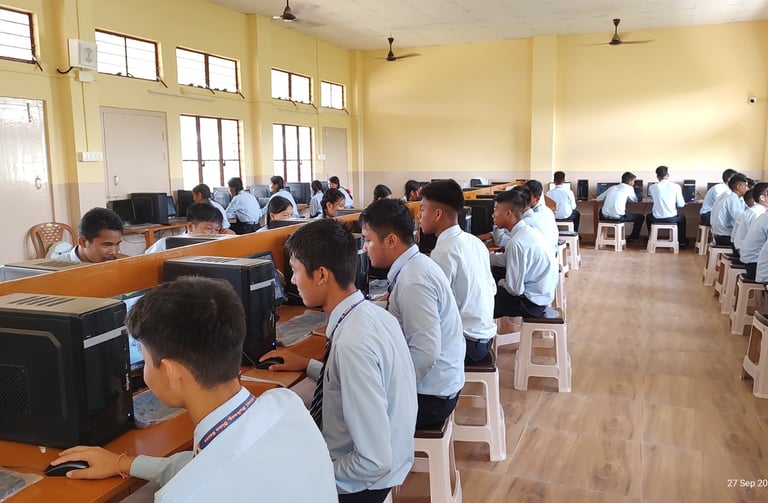

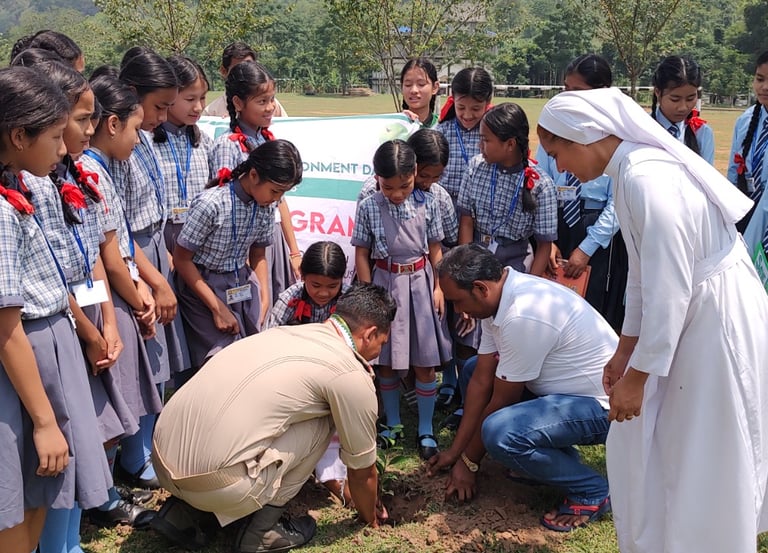

The people of Dima Hasao, known as the Dimasas, are an indigenous tribal community officially recognized as a Scheduled Tribe. The district lags behind the rest of Assam in most socioeconomic indicators. The region is characterized by basic living conditions, poor health infrastructure, and a cycle of poverty and superstition.
Education in the district has been of poor quality. Although there are government-run schools, they offer little more than basic literacy, with high dropout rates and students often leaving school ill-prepared for the job market.
Rejin Joseph is a Kohima Jesuit. He has been actively engaged in secondary education in the Dima Hasao area. He is currently engaged in an Advanced Jesuit Studies program.
Our Partners













